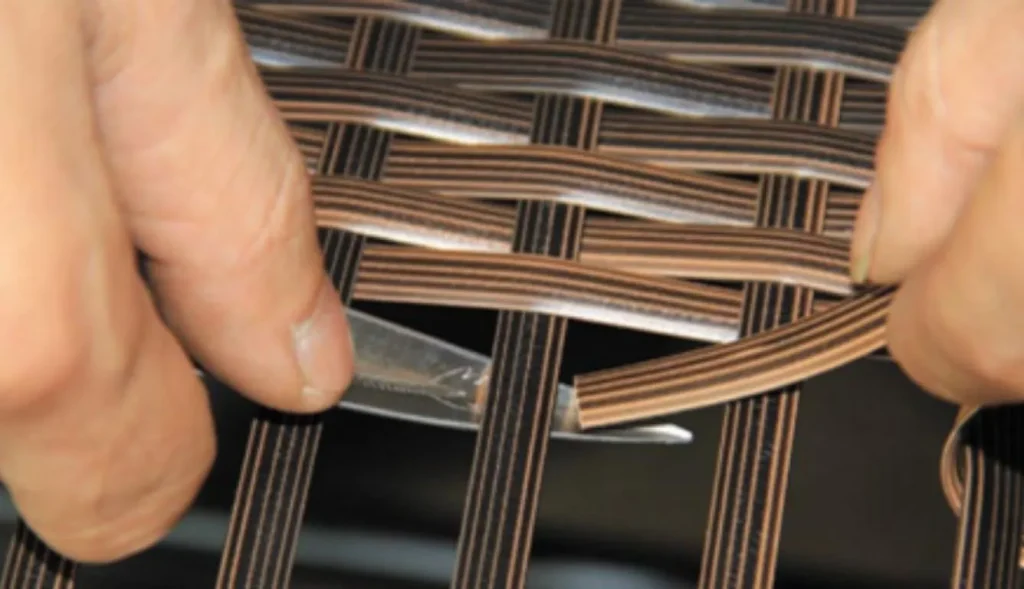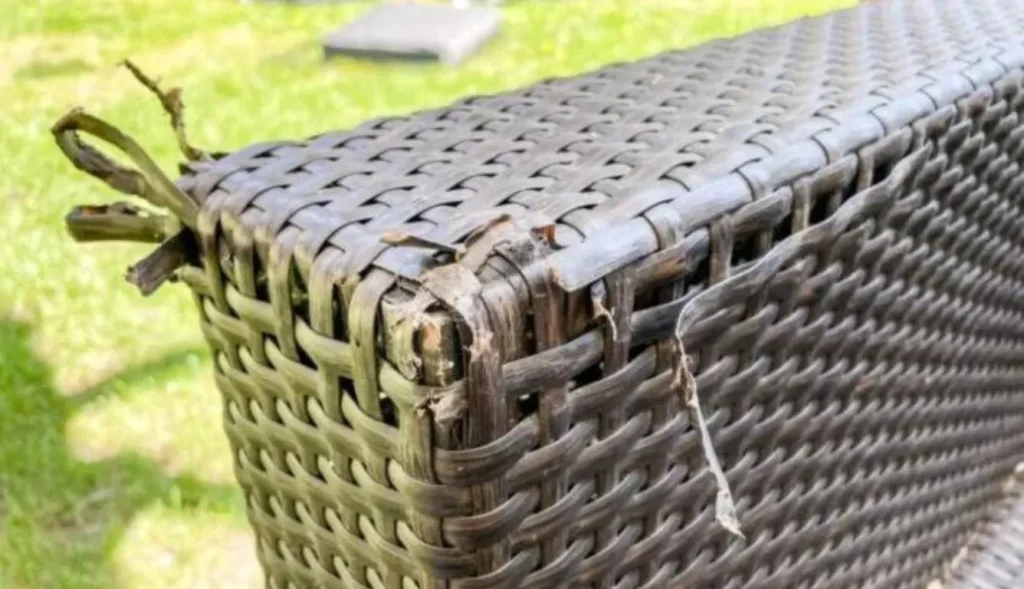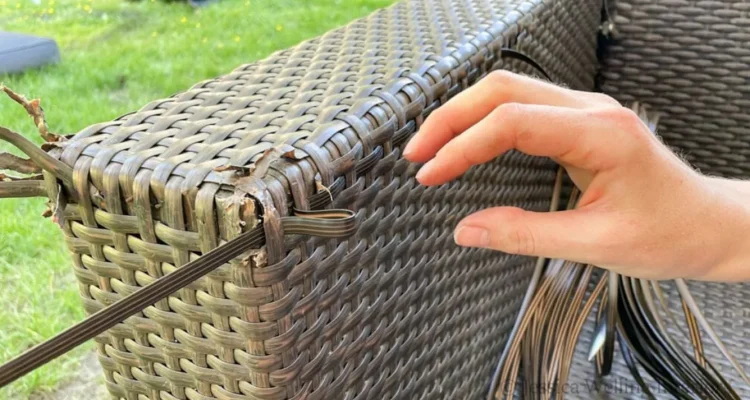Introduction
Plastic wicker furniture is a popular choice for outdoor living spaces due to its durability, lightweight nature, and aesthetic appeal. However, like any outdoor furniture, it’s susceptible to wear and tear. From small cracks to loose strands and fading, plastic wicker can start to show signs of aging if not properly cared for. But don’t worry—most of these issues can be fixed with a little effort, giving your furniture a new lease on life.
In this guide, we’ll walk you through the process of repairing plastic wicker furniture step by step. Whether you’re dealing with a small crack or a major break, we’ve got you covered. Plus, we’ll share some tips on how to maintain your furniture to prevent future damage.

Understanding the Material
What is plastic wicker?
Plastic wicker, also known as resin wicker, is a synthetic material designed to mimic the look of natural wicker. It’s typically made from polyethylene, a durable and weather-resistant plastic that can withstand exposure to the elements.
Differences between natural and plastic wicker
Unlike natural wicker, which is made from plant fibers like rattan, plastic wicker is more resistant to moisture, UV rays, and pests. This makes it an ideal choice for outdoor furniture, as it requires less maintenance and has a longer lifespan.
Common Problems with Plastic Wicker Furniture
Cracks and breaks
Over time, exposure to the sun, rain, and temperature fluctuations can cause the plastic strands to become brittle and crack. This is one of the most common issues with plastic wicker furniture.
Fading and discoloration
Another common problem is fading, where the vibrant colors of the plastic wicker start to dull due to prolonged exposure to sunlight.
Loose or missing strands
The woven nature of wicker furniture means that individual strands can sometimes come loose or even go missing, creating unsightly gaps in the pattern.
Tools and Materials You’ll Need
Before you begin the repair process, it’s important to gather all the necessary tools and materials:
- Scissors or a utility knife
- A heat gun or hairdryer
- Plastic wicker repair kit (available at most hardware stores)
- Super glue or epoxy resin
- Matching paint or spray paint designed for plastic
- A soft cloth and mild detergent for cleaning
Choosing the right repair materials
When selecting a repair kit, make sure to choose one that matches the color and texture of your existing furniture. Some kits come with pre-cut strands, while others allow you to cut the material to the desired length.
Preparing Your Workspace
Setting up a safe and clean workspace
Choose a well-ventilated area, preferably outdoors, to carry out your repairs. Lay down a protective sheet or old newspaper to catch any drips or debris. Ensure that your workspace is free from distractions and that you have easy access to all your tools and materials.
Safety precautions to take
When working with adhesives and heat, it’s essential to take safety precautions. Wear protective gloves and goggles to protect your hands and eyes. If you’re using a heat gun, be careful not to overheat the plastic, as it can melt or warp.
Repairing Cracks and Breaks
Step-by-step guide to fixing small cracks
- Clean the area: Before repairing, clean the cracked area with a mild detergent and a soft cloth to remove any dirt or debris.
- Heat the plastic: Use a heat gun or hairdryer to gently warm the cracked area. This will make the plastic more pliable and easier to work with.
- Apply adhesive: Apply a small amount of super glue or epoxy resin to the crack, pressing the edges together to seal it.
- Hold in place: Hold the cracked area together for a few minutes to allow the adhesive to bond.
- Cool down: Allow the area to cool and set for at least 24 hours before using the furniture again.
How to handle larger breaks in the frame
For larger breaks or completely broken strands, you’ll need to replace the damaged area with new plastic wicker. Use the repair kit to cut a new strand to the appropriate length, then weave it into place, securing it with adhesive as needed.
Replacing Loose or Missing Strands
Identifying loose or missing strands
Carefully inspect your furniture to identify any strands that are loose, frayed, or missing. It’s important to address these issues promptly to prevent further damage.
How to replace strands using repair kits
- Cut the new strand: Using your repair kit, cut a new strand that matches the length and color of the missing piece.
- Weave the strand: Carefully weave the new strand into the existing pattern, mimicking the original weave as closely as possible.
- Secure with adhesive: Apply a small amount of glue at the ends of the new strand to secure it in place.
Tips for matching the color and texture
If you can’t find an exact color match, consider using paint or a colored sealant to blend the new strand with the existing ones. This will help create a seamless look.
Dealing with Fading and Discoloration
How to restore the original color
To restore the vibrant color of your plastic wicker furniture, you can use a specially formulated spray paint for plastic. Choose a color that matches the original shade of your furniture.
Using paints and sprays designed for plastic wicker
- Clean the furniture: Thoroughly clean the furniture to remove dirt, dust, and oils that could prevent the paint from adhering.
- Apply primer: Use a primer designed for plastic surfaces to ensure that the paint sticks properly.
- Spray the furniture: Apply the spray paint in thin, even coats, allowing each coat to dry completely before applying the next.
Preventing future fading
To protect your furniture from future fading, consider applying a UV-resistant sealant. Additionally, keep your furniture covered or store it indoors when not in use.
Strengthening Weak Spots
Identifying weak areas in the furniture
Weak spots in plastic wicker furniture often occur where the weave is loose or where the strands have thinned over time. These areas are more susceptible to further damage if not addressed.
Methods to reinforce these spots
You can reinforce weak spots by weaving additional strands into the affected area, or by applying a layer of epoxy resin to strengthen the existing material.
Cleaning and Maintaining Your Plastic Wicker Furniture
Best practices for regular cleaning
Regular cleaning is essential to maintain the appearance and longevity of your plastic wicker furniture. Use a soft brush or cloth to remove dust and debris, and clean with a mild detergent and water.
Protecting your furniture from weather damage
To prevent weather damage, cover your furniture during harsh weather conditions, and store it indoors during the winter months. Regularly inspect your furniture for signs of wear and address any issues promptly.
When to Consider Professional Help
Signs that you need a professional
If your furniture has extensive damage, such as multiple broken strands or a severely damaged frame, it might be best to consult a professional. A professional can assess the extent of the damage and recommend the best course of action.
Cost versus DIY repairs
While DIY repairs can save money, it’s important to consider whether the time and effort required are worth the savings. In some cases, professional repair might be more cost-effective, especially if it extends the life of your furniture.
Tips for Preventing Future Damage
How to protect your furniture from wear and tear
To minimize wear and tear, avoid placing heavy objects on your wicker furniture, and rotate cushions and other accessories to distribute weight evenly.
Using covers and proper storage
Investing in high-quality covers can protect your furniture from the elements and extend its lifespan. When storing your furniture, keep it in a dry, cool place to prevent mold and mildew growth.
Read also: Creative Ways to Repurpose Excess Wood
Eco-Friendly Disposal of Unrepairable Furniture
Options for recycling plastic wicker
If your plastic wicker furniture is beyond repair, consider recycling it rather than sending it to the landfill. Some recycling centers accept plastic wicker, but you may need to check with your local facility.
How to responsibly dispose of old furniture
If recycling isn’t an option, consider donating your furniture to a local charity or repurposing it for another use. Upcycling projects can give old furniture a new purpose and reduce waste.
Read also: Understanding Mark-up on Furniture
FAQs
How long does plastic wicker furniture last?
With proper care, plastic wicker furniture can last anywhere from 5 to 15 years or more.
Can you paint plastic wicker furniture?
Yes, you can paint plastic wicker furniture using spray paint designed for plastic surfaces.
Is it worth repairing plastic wicker furniture?
In most cases, repairing plastic wicker furniture is worth the effort, especially if the damage is minor.
What’s the best way to clean plastic wicker?
The best way to clean plastic wicker is with a soft brush and mild detergent. Avoid using harsh chemicals that could damage the material.
How can I prevent my plastic wicker furniture from fading?
To prevent fading, apply a UV-resistant sealant and store the furniture indoors when not in use.

Conclusion
Plastic wicker furniture is a fantastic choice for outdoor spaces, but like any furniture, it requires care and maintenance to stay in good condition. By following the steps outlined in this guide, you can repair common issues like cracks, fading, and loose strands, and keep your furniture looking great for years to come. Remember, a little effort goes a long way in preserving the beauty and functionality of your outdoor furniture.


Congratulation!